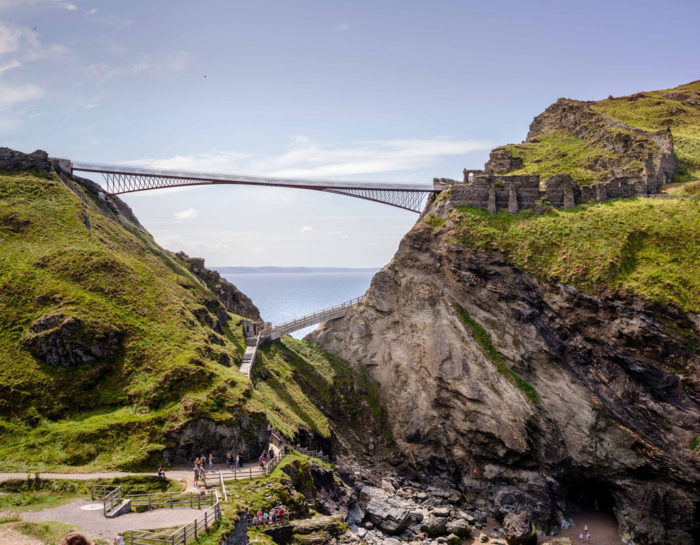Mystical Britain: Britain’s most sacred sites
For the first time in 500 years, the two separated halves of Tintagel Castle have been reunited thanks to a new bridge, prompting Ravneet Ahluwalia to go in search of Britain’s most fascinating sacred sites
Tintagel Castle
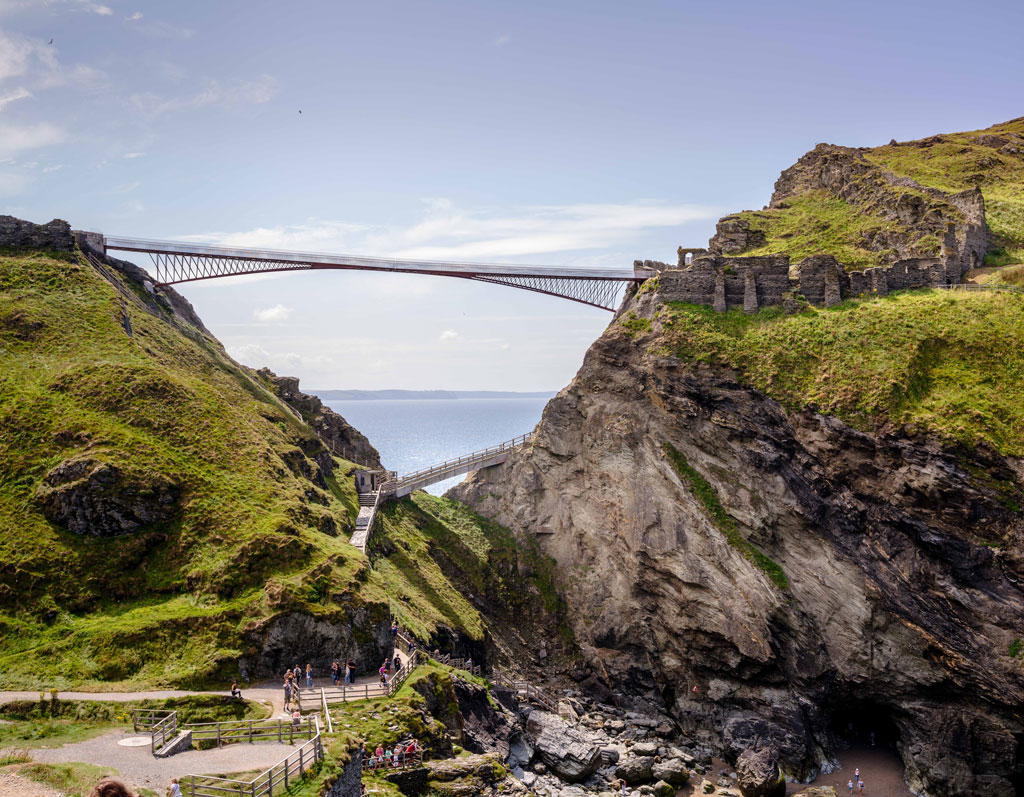
In August, the charity English Heritage succeeded in completing a miracle worthy of an Arthurian legend. The two halves of Tintagel Castle, separated by a 190-foot gorge, have finally been reunited after more than 500 years.
The narrow strip of land that once connected the 13th-century gatehouse with the main courtyard on the headland had long since eroded away, so it has taken the installation of a jaw-dropping suspended footbridge to reconnect the two. The castle’s old Cornish name even makes reference to the precarious path, with “Din Tagell” apparently translating as “the Fortress of the Narrow Entrance”.
Tintagel is inextricably linked with the legend of King Arthur, after Geoffrey of Monmouth, writing in the 12th century, claimed the monarch had been conceived here. And it was this claim that almost certainly lead Richard, Earl of Cornwall, to build his cliff-top fortress here a century later.
As well as exploring the castle ruins, you will also find a bronze statue of King Arthur and the recently-excavated footprints of houses on the headland that date back as far as the 5th century BC. The footbridge, meanwhile, was the culmination of a wider £5 million project and it was no understatement when English Heritage’s Kate Mavor said, “Tintagel Castle has been made whole again.”
While you’re in the area, be sure to venture down Tintagel Road towards Boscastle. Not only will you reach the Museum of Witchcraft and Magic with its vast collection of religious and mystical artefacts, but you will also pass St Nectan’s Glen along the way, a 60-foot waterfall hidden in a tree-lined glade that locals believe was once home to the namesake saint.
Glastonbury Tor
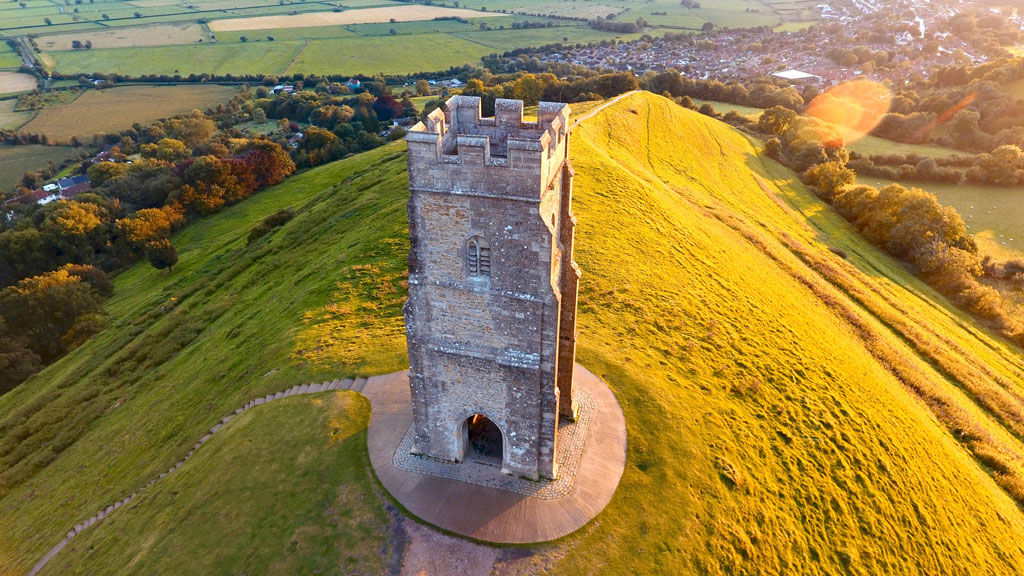
The Glastonbury festival at Worthy Farm in Somerset is the biggest and most popular of its kind in the world, regularly attracting more than 200,000 visitors for five days of music, performing arts and general revelry. The event began life, however, as the free Pilton Pop, Blues and Folk Festival in 1970, with travellers attracted by the mysticism connected to the area, and in particular the nearby Glastonbury Tor.
Rising from the Somerset Levels, the Tor consists of the 14th-century St Michael’s Church tower sat atop a clay-and-Blue Lias hill into which are set seven terraces. Archaeological excavations nearby have revealed evidence of Neolithic and Dark Age settlements, yet it is the more recent yet unproveable stories connected to the Tor that have established its mystical reputation. Many believe that this is the site of Avalon, the island on which King Arthur’s sword Excalibur was forged (and given that the Somerset Levels often flooded in the Middle Ages, this is more plausible than it sounds). Others have asserted that the terraces hide a Neolithic labyrinth or even the Holy Grail.
Regardless of the legends, a climb up the steep path rewards you with one of the West Country’s most breath-taking views.
www.nationaltrust.org.uk/glastonbury-tor
Ness of Brodgar
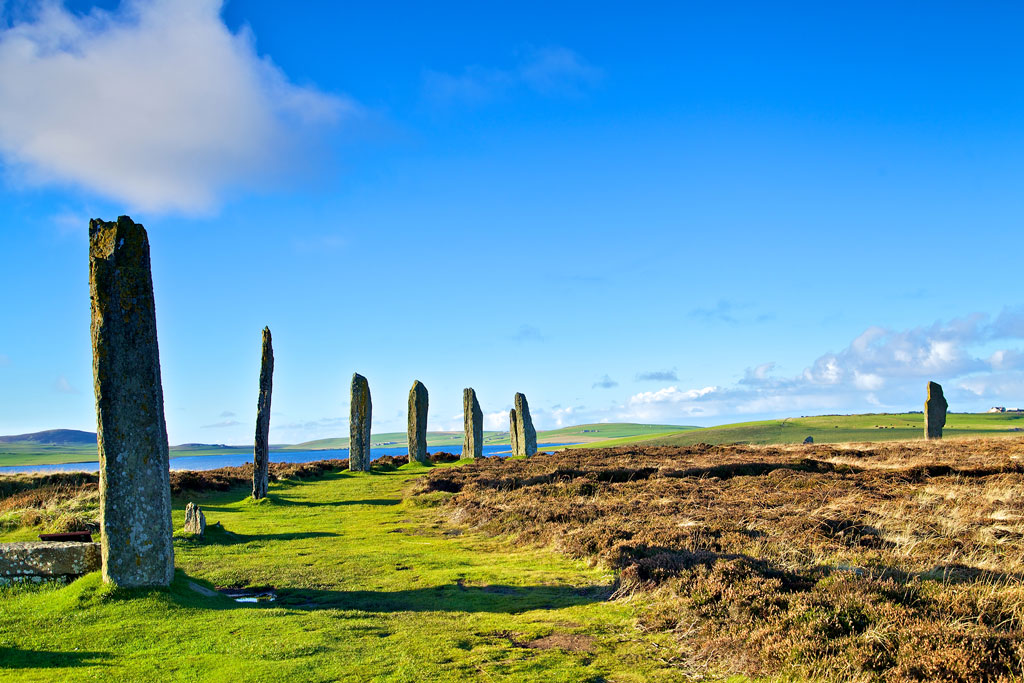
For years, the ridge of land between the Stones of Stenness and the Ring of Brodgar stone circles on the isle of Orkney was thought to have been a natural development, the earth having formed a distinctive, narrow whaleback shape over the course of many years.
Geophysical surveys of this Neolithic site completed since 2002 have in fact revealed that this is no work of geology, but rather the product of ancient communities building on the isthmus between the two circles. It is thought that a temple complex was created here, set inside the natural “cauldron” of the peninsula and surrounded by stone structures believed to have been used for various religious and celestial events. Evidence of tiled roofs, coloured walls and more than 800 decorated stones have been found in a crowd-funded dig that remains ongoing and available to visit via guided tours.
Goat’s Hole
Goat’s Hole is one of the larger of the Paviland Caves on the Gower Peninsula in Wales. Currently above sea level, the 70-foot cave would have been inhabited during the last Ice Age. While it is a picturesque setting anyway, particularly looking outward across the Bristol Channel towards Devon, this eroded cleft is notable for a remarkable discovery made in 1823.
The previous year had seen an excavation of the site made by a group of archaeologists who found animal bones and mammoth tusks. This piqued the interest of Oxford geology professor William Buckland who visited the following January and unearthed the so-called “Red Lady of Paviland”. Initially thought to be the remains a woman, what Buckland actually found was an adult male skeleton dating from the Stone Age that had been covered in red ochre and ceremonially buried alongside shell beads and carved ivory. In total around 4,000 flints, bracelets and other artefacts have been discovered in the cave, which remains a fascination to geologists and historians alike.
Avebury
The second most famous Neolithic stone circle in Britain also happens to be the largest. There are in fact three circles here, two smaller ones and a larger outer ring that may have once contained more than 100 stones when it was first built, possibly between 2800 and 2200 BC. And we have marmalade heir Alexander Keiller to thank for the current henge after he cleared buildings from the site and returned many stones to their rightful positions in the 1930s; a museum displaying treasures from the site bears his name today.
The stones are at the heart of a vast henge that includes a circular bank and ditch, which encompasses an area of around 28 acres, including part of Avebury village in the process. It is believed that the henge was linked by two avenues of stones to other ceremonial stone sites at Beckhampton and Overton Hill, while the man-made Silbury Hill nearby is also relatively contemporary and possibly part of the whole development. It is thought that ritualistic ceremonies to the gods were enacted here prior to their abandonment in 1800 BC.
www.nationaltrust.org.uk/avebury
Lindisfarne
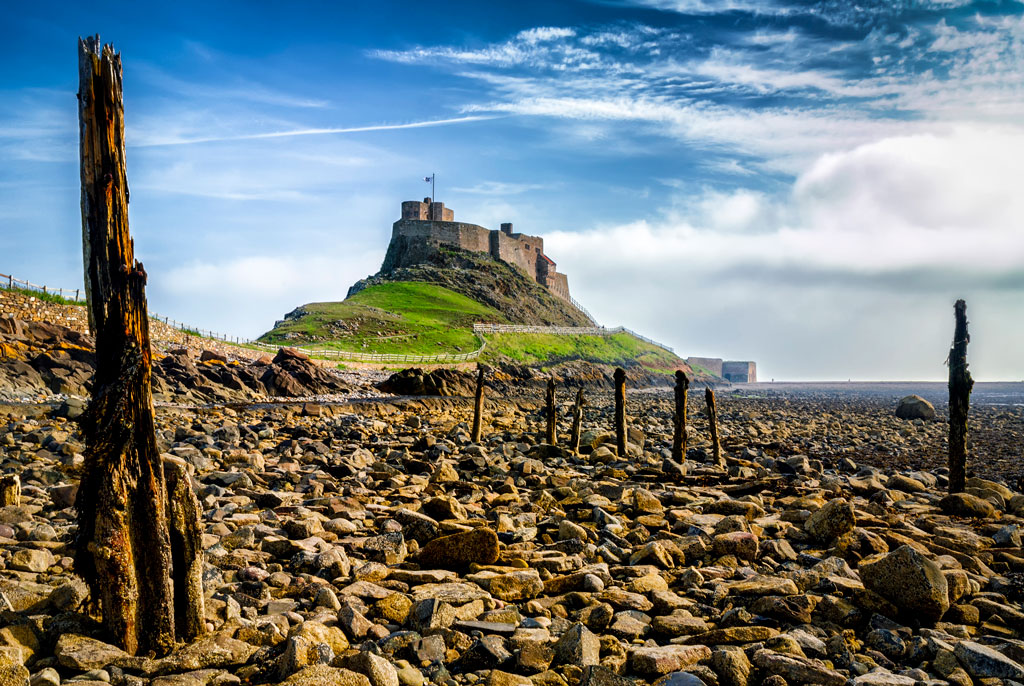
While many sacred sites aren’t always what they initially appear, Lindisfarne truly is a paradox: a castle that isn’t a castle on an island that isn’t an island. This ancient holy island is connected to England’s northeast coast by a tidal causeway that is swept away by the North Sea twice a day, while the 16th-century castle was extensively renovated in 1903 by architect Sir Edwin Lutyens [see p38] into a romantic home now in National Trust care.
Lindisfarne first gained its mystical reputation when the exiled Saint Aiden established a monastery here in AD 634; Saint Cuthbert soon followed, a holy man with a reputation for healing and miracles. The local monks later created the Lindisfarne Gospels – a copy of the four biblical books (perhaps the most spectacular surviving Anglo-Saxon manuscript) is held at London’s British Library. By 793, they fled a Viking raid, but not before several monks died as Christian martyrs.
Explore the three-mile-wide tidal island today and you can also find a 12th-century ruined priory and its “rainbow” arch, the disused Castle Point Lime Kilns and the home of Lindisfarne Mead – a medieval alcoholic drink made from honey, fermented grape juice and island waters.
www.nationaltrust.org.uk/lindisfarne-castle
Stonehenge
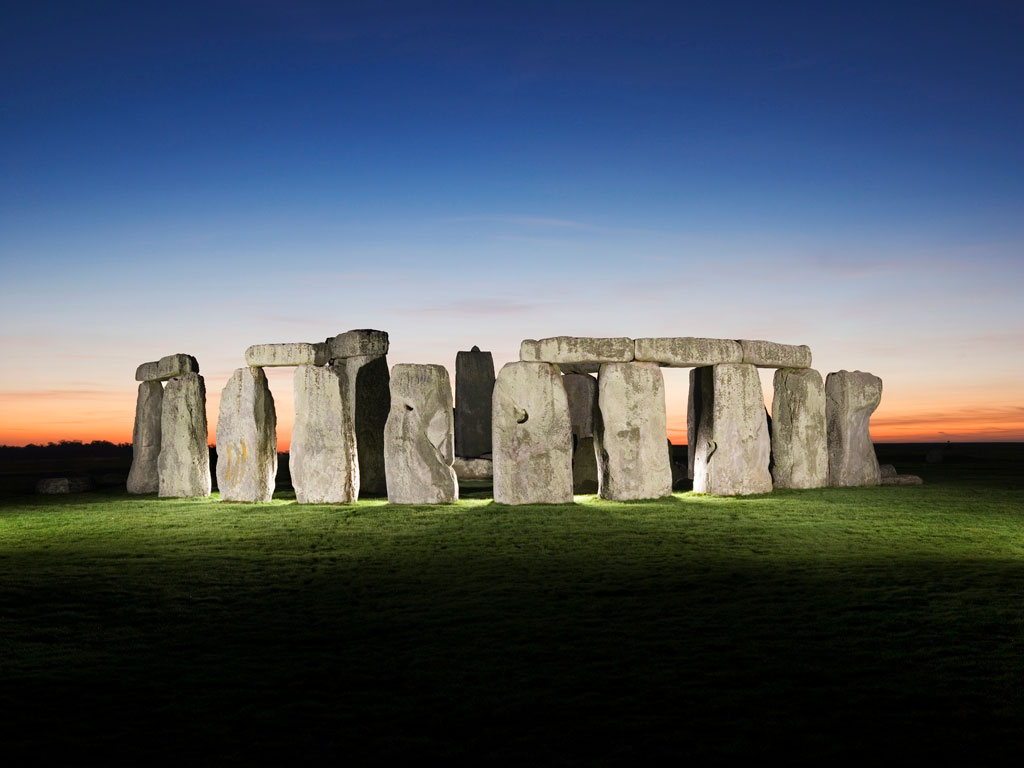
No look at Britain’s sacred sites would be complete without the grandfather of them all: Stonehenge. The world’s most architecturally sophisticated prehistoric stone circle is impressive for a number of reasons, from concentric plan and precision carving, right through to the very size of the megaliths and lintels, hewn from Wiltshire sandstone and Pembroke Bluestone, and, in some cases, transported more than 160 miles – no mean feat in the Neolihic era.
While the astronomical significance of the circle is still being explored (the stones are aligned on the axis of the midsummer sunrise and midwinter sunset), the UNESCO World Heritage Site has become rather coddled by authorities, keen to reduce the number of visitors.
Thankfully, English Heritage has installed a solar-powered, fish-eye lens camera that provides fresh footage online at the Stonehenge Skyscape website.

